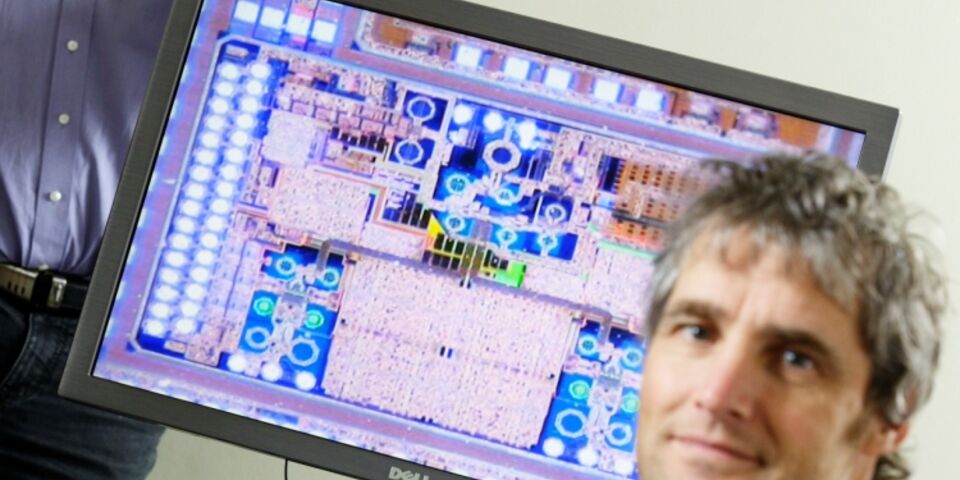Pocket radar
Thinking about radar usually produces images of satellite dishes tracing ships and airplanes from miles away; it’s not exactly a technique you’d expect to fit on a chip. And yet that’s very well possible, say dr.ir. Reza Mahmoudi, associate professor at Mixed-signal Microelectronics (MsM), and dr.ir. Paul van Zeijl of the recently founded OmniRadar. Late last year they were awarded a 200,000-euro Valorization Grant for marketing their One-Chip-Radar, a radar system on a chip.
“When you mention radar, everyone immediately visualizes the satellite dishes used by the navy in Den Helder or at Schiphol, which are some five meters across”, says Mahmoudi. “Radar systems like that can spot airplanes and ships from great distances. They require a great amount of power. If you’re interested in nearby objects however, you can make do with a smaller system using less power. On top of that the resolution, or accuracy, of large radar systems is quite limited, which is fine if you’re looking for ships that are several dozen meters in length, but we’ve built radar that can distinguish between details measuring less than a centimeter. Doing so requires a higher frequency.”
Radar is a type of echolocation. Bats map their surroundings by producing high-frequency sounds and listening to their reverberations. Radar works in much the same way, but uses radio waves. Radar enables measuring the distance and size of objects, but also – through the Doppler Effect – its speed in relation to the radar.
The higher the frequency, the shorter the wavelength of the transmitted waves, and the more accurate the visualization of objects or surfaces will be. One Megahertz equals a 300-meter wavelength; one hundred Gigahertz equals three millimeters. The frequency used has a direct influence on the size of the antennae required. “We’re using a frequency band of about 60 Gigahertz”, says the Iranian-born Mahmoudi. “It means the antennae we work with are just a few millimeters in size, and so they fit on a chip.”
One of the advantages of 60 Gigahertz is the availability of some ‘free space’: the frequency has a license-free frequency band of approximately seven Gigahertz that may be used to transmit signals freely – up to a certain capacity – because those frequencies aren’t used for radio, mobile telephony and the like. For that reason, the MsM group has been working on 60-Gigahertz electronic systems for years. For the design of the required antennae, they are aided by prof.dr. Bart Smolders and doctoral candidate Ulf Johannsen of the Electromagnetics group (EM). Research on this topic has already led to several doctorates, and now it has also set in motion the One-Chip-Radar idea, a silicon chip measuring only 6x7x1 millimeters.
What’s unique about the new system is that all parts are integrated in one chip, including the antennae and the conversion from analog to digital signals. Obviously, complicated calculations will require an external processor, and the unit will of course need to be fitted with electricity, but radar on a chip is much more convenient than one taking up half an aircraft carrier. In short, it seems radar smartphones could soon be a reality.


Discussion